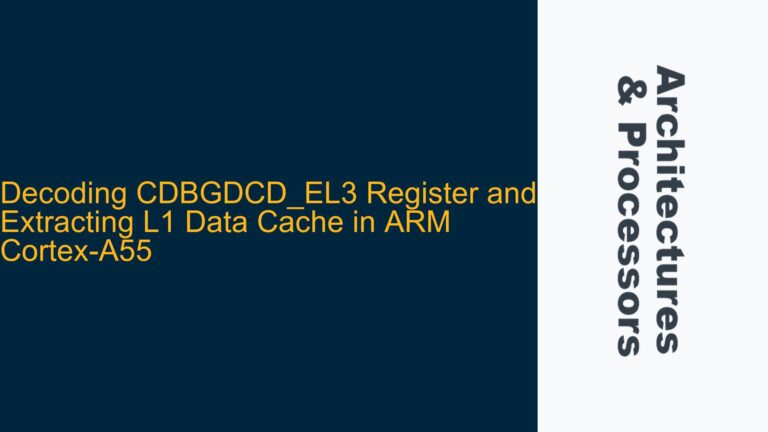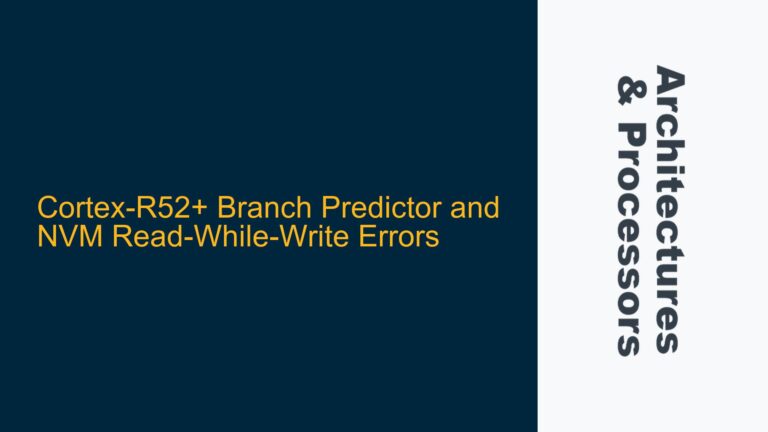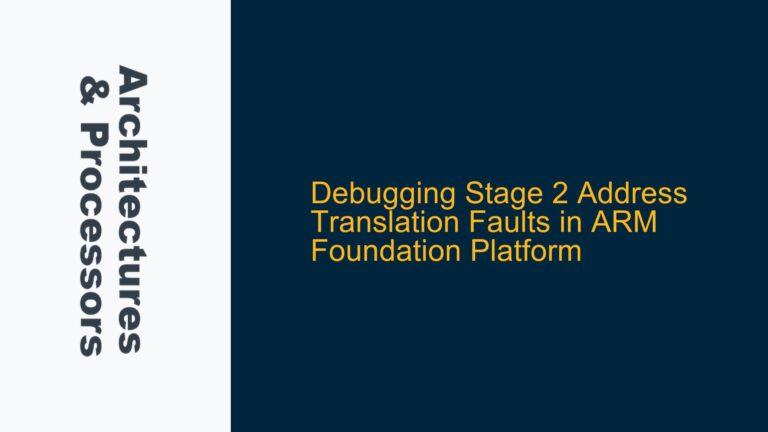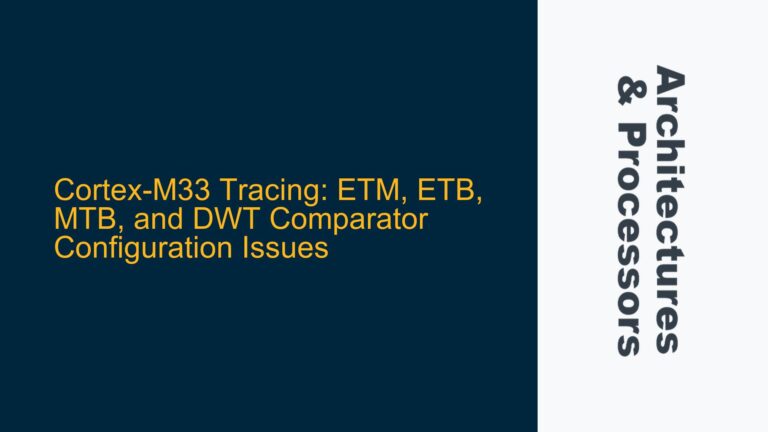AXI4 Master Issuing Outstanding Transactions to Multiple Slaves
In the context of ARM’s AXI4 protocol, a common design scenario involves a single AXI4 master interfacing with multiple AXI4 slaves. A critical question arises: Can a single AXI4 master issue outstanding transactions to more than one slave simultaneously? Specifically, can the master initiate a data transfer to Slave0 with Transaction IDx and then immediately initiate another transfer to Slave1 with Transaction IDy without waiting for the completion status of the previous transfer? The answer is yes, but this capability introduces several complexities related to transaction ordering, write data interleaving, and response handling.
The AXI4 protocol is designed to support multiple outstanding transactions, allowing a master to issue new transactions before receiving responses for previous ones. This feature is particularly useful in high-performance systems where latency hiding and throughput optimization are critical. However, the protocol imposes specific rules on how transactions with different IDs are handled, especially concerning write data ordering and response management. Understanding these rules is essential for ensuring correct system behavior and avoiding subtle bugs that can arise from improper transaction handling.
Write Data Ordering Constraints and Transaction ID Management
One of the key aspects of the AXI4 protocol is its handling of write data ordering. Unlike AXI3, AXI4 does not support write data interleaving. This means that for a given transaction ID, all write data transfers (WDATA) must complete before any write data transfers for a subsequent transaction with a different ID can begin. This constraint ensures that the write data for each transaction remains contiguous and ordered, simplifying the design of both masters and slaves.
For example, consider a scenario where an AXI4 master issues two write transactions: Transaction IDx to Slave0 and Transaction IDy to Slave1. The master must ensure that all WDATA transfers for Transaction IDx are completed before initiating any WDATA transfers for Transaction IDy. This requirement holds even if the two transactions are targeting different slaves. The protocol enforces this ordering to prevent data corruption and ensure predictable behavior.
However, the B channel responses for these transactions can arrive in any order, provided that the transactions have different IDs. This flexibility allows slaves to respond to transactions as they complete, regardless of the order in which the transactions were issued. For instance, if Slave1 completes its transaction before Slave0, it can send its B channel response immediately, even though Transaction IDx was issued first. The master uses the transaction IDs to correctly associate each B channel response with its corresponding transaction.
If the master uses the same transaction ID for multiple outstanding transactions, the protocol requires that the B channel responses arrive in the same order as the transactions were issued. This ordering ensures that the master can correctly track the completion status of each transaction. Violating this rule can lead to incorrect system behavior, as the master may misinterpret the responses.
Debugging and Resolving AXI4 Transaction Ordering Issues
When designing and verifying an AXI4-based system, it is crucial to ensure that the master and slaves adhere to the protocol’s transaction ordering rules. Failure to do so can result in subtle bugs that are difficult to diagnose. Below are detailed steps to identify, troubleshoot, and resolve common issues related to outstanding transactions and write data ordering in AXI4 systems.
Step 1: Verify Transaction ID Assignment and Usage
The first step in debugging AXI4 transaction ordering issues is to verify that the master correctly assigns and uses transaction IDs. Each outstanding transaction must have a unique ID if the master intends to issue multiple transactions concurrently. Using the same ID for multiple transactions can lead to incorrect behavior, as the master may not be able to distinguish between the responses.
In the simulation environment, monitor the AWID and ARID signals to ensure that the master assigns unique IDs to concurrent transactions. If the master reuses IDs, investigate the logic responsible for ID assignment and ensure that it correctly tracks the status of outstanding transactions.
Step 2: Check Write Data Ordering Compliance
Next, verify that the master complies with the AXI4 protocol’s write data ordering rules. Specifically, ensure that all WDATA transfers for a given transaction ID complete before any WDATA transfers for a subsequent transaction ID begin. This rule applies even if the transactions target different slaves.
In the simulation environment, monitor the WVALID, WREADY, and WDATA signals to confirm that the write data for each transaction ID is contiguous and ordered. If the master violates this rule, investigate the logic responsible for managing write data transfers and ensure that it enforces the required ordering.
Step 3: Analyze B Channel Response Ordering
Once the master and slaves are correctly handling transaction IDs and write data ordering, the next step is to analyze the B channel responses. Verify that the slaves are sending B channel responses in the correct order, based on the transaction IDs.
If the transactions have different IDs, the B channel responses can arrive in any order. However, if the transactions use the same ID, the responses must arrive in the same order as the transactions were issued. In the simulation environment, monitor the BVALID, BREADY, and BRESP signals to confirm that the responses comply with these rules.
If the responses are not arriving in the correct order, investigate the logic responsible for generating and handling B channel responses in both the master and slaves. Ensure that the logic correctly tracks the transaction IDs and enforces the required ordering.
Step 4: Implement and Verify Corrective Measures
If any issues are identified during the above steps, implement corrective measures and verify their effectiveness. For example, if the master is reusing transaction IDs, modify the ID assignment logic to ensure that each outstanding transaction has a unique ID. If the write data ordering is incorrect, modify the logic responsible for managing write data transfers to enforce the required ordering.
After implementing the corrective measures, re-run the simulation to verify that the issues have been resolved. Pay close attention to the transaction IDs, write data ordering, and B channel responses to ensure that the system now complies with the AXI4 protocol’s rules.
Step 5: Perform Corner Case Testing
Finally, perform corner case testing to ensure that the system handles all possible scenarios correctly. This includes testing with different combinations of transaction IDs, varying numbers of outstanding transactions, and different response ordering scenarios. Corner case testing helps uncover subtle issues that may not be apparent during normal operation.
In the simulation environment, create test cases that stress the system’s handling of outstanding transactions and write data ordering. For example, issue multiple transactions with different IDs to different slaves and verify that the write data ordering and B channel responses comply with the protocol. Additionally, test scenarios where the slaves respond to transactions in different orders to ensure that the master correctly handles the responses.
By following these steps, designers and verification engineers can effectively identify, troubleshoot, and resolve issues related to outstanding transactions and write data ordering in AXI4-based systems. Ensuring compliance with the AXI4 protocol’s rules is essential for achieving correct and predictable system behavior.






